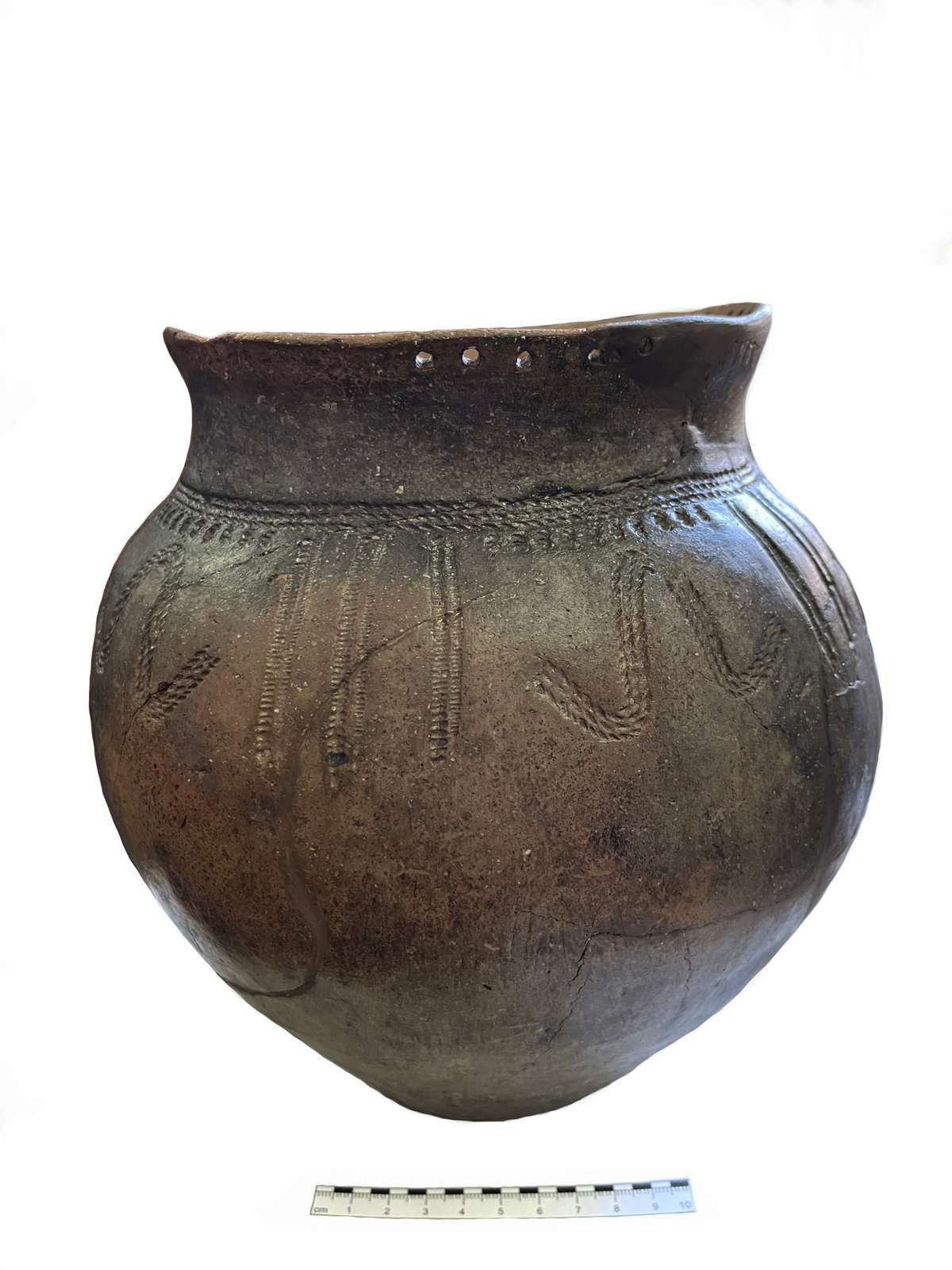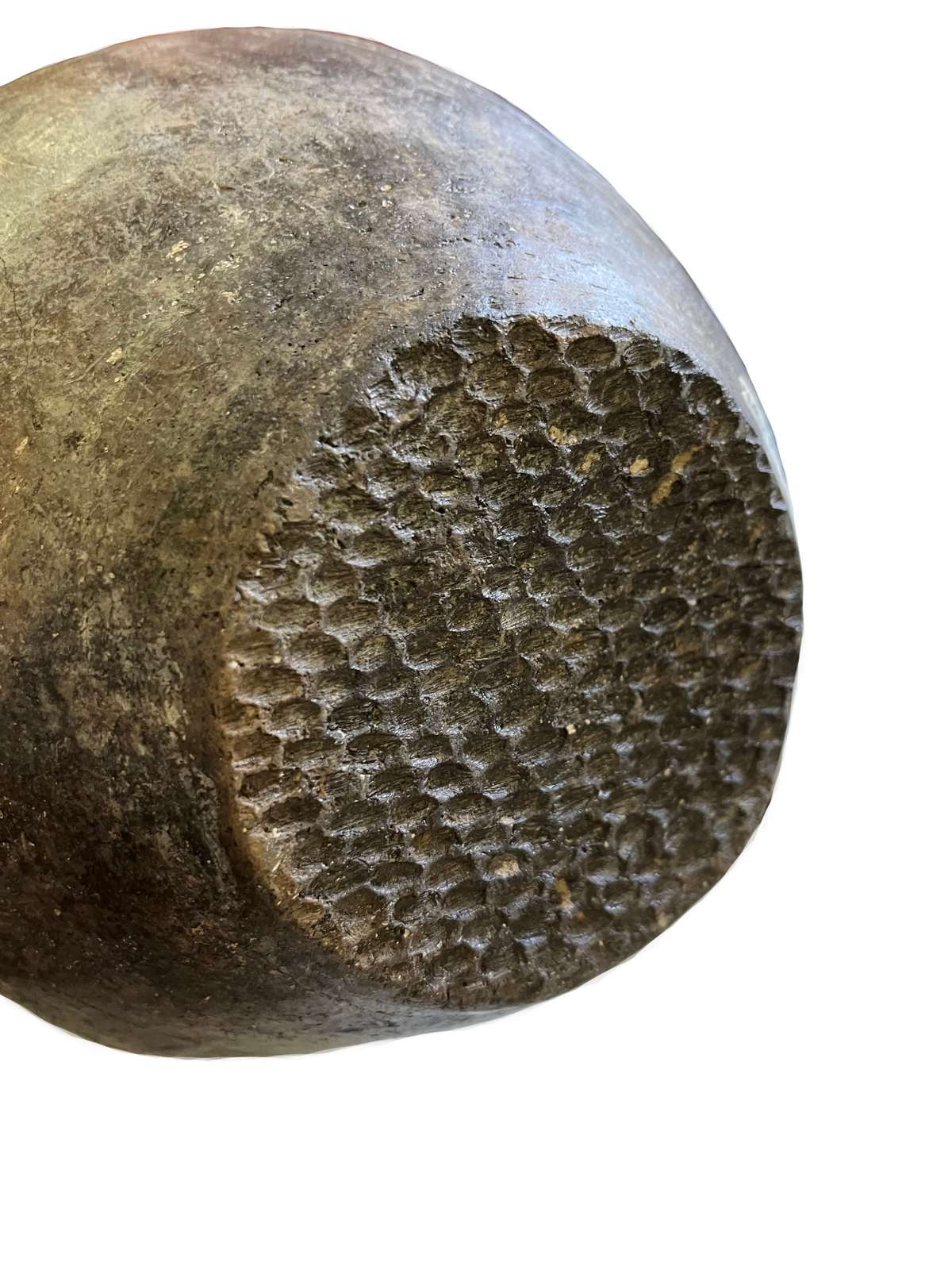>>>

This clay vessel was discovered in 1982 by archaeologist V. Sorochin during excavations of a burial mound (no. 1) located in the village of Speia, Dubăsari District. It originates from grave no. 5 and is dated to the 4th millennium BC, belonging to the Usatovo culture.
The vessel was found in a child's grave. The burial pit had an oval shape, and the deceased was laid in a crouched position (similar to the fetal posture), on the left side. A total of five vessels were uncovered in this grave: three near the back, one at the feet, and one in the pelvic area.
The cultural attribution of this funerary complex was determined based on the burial rite and grave goods. This culture is characterized by the specific construction of the burial pit, as well as the positioning and orientation of the deceased toward the east and northeast.

The vessel is shaped from clay mixed with finely crushed shell. Its walls curve gradually toward the top, with the widest diameter at the shoulder area. It has a short neck, a slightly flared rim, and a flat base. The surface is carefully polished, in some areas to a lustrous finish. The interior is reddish-brown, while the exterior is yellowish-brown with gray spots. The rim features groups of perforations, three of which are preserved in their original state. The diameter of the holes is 0.35 cm. The space between the groups of perforations is decorated with cord impressions. The transition from the neck to the shoulder is adorned with three horizontal lines made with cord, from which, in five places, three vertical lines descend, each 5 cm long, executed using the same technique. At the time of discovery, these lines were filled with a white paste. The space between the groups of lines is decorated at the top with short vertical lines (0.5 cm long), and in the center with a meander ornament made of two parallel lines impressed with cord. The base of the vessel retains the imprint of a textile.
Vessel dimensions: Height: 22 cm; Rim diameter: 15.7 cm; Maximum diameter: 22 cm; Base diameter: 10 cm.

